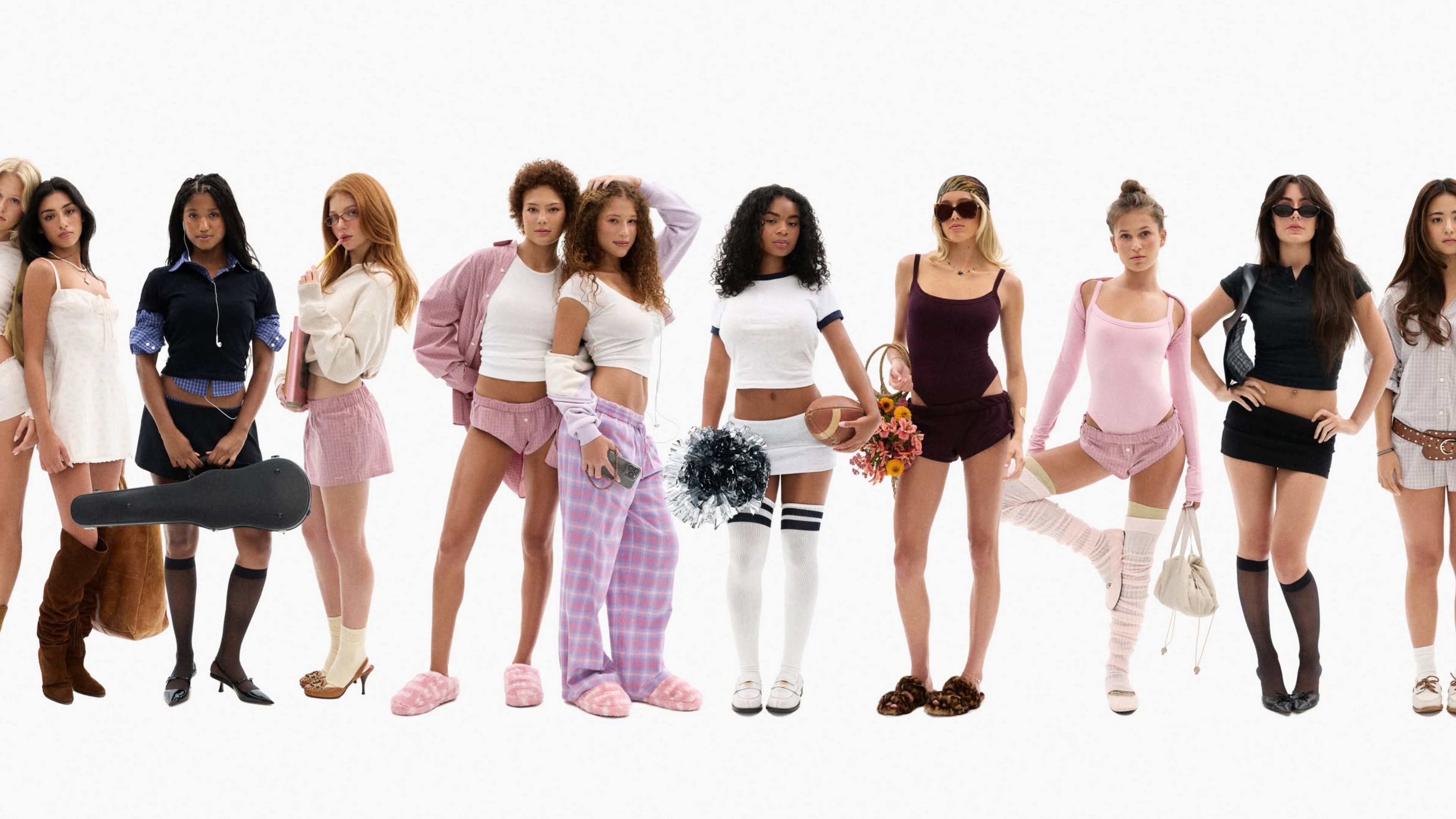Fashion has always moved with the times. But lately, it’s not just seasons or silhouettes that are changing—it’s the fabric of the industry itself. Quietly, and sometimes invisibly, technology is weaving its way into every layer of fashion. This isn’t a passing trend. It’s a full-blown shift in how fashion is designed, sold, worn—and even felt.
At first glance, fashion tech might sound futuristic. But many of these changes are already here. AI models are appearing in campaigns. Virtual wardrobes let us rent, resell and restyle from our phones. Smart mirrors, 3D printing and mixed reality are popping up in fitting rooms from London to Seoul. Fashion is stepping into a new era—digital, data-driven, and fast. But in all this innovation, a bigger question emerges: can fashion stay emotional, expressive, and human?
The startups shaping a smarter industry
The New York Fashion Tech Lab’s 2025 cohort is a telling place to start. This group of women-led startups is focused on real-world fixes. It’s not about hype. It’s about solutions—for waste, for relevance, for the customer who wants more meaning with their purchase.
“Fashion innovation isn’t always loud. Sometimes it’s smart, silent, and system-deep.”
- LiquiDonate, founded by Disney Petit, is taking on one of fashion’s biggest hidden problems: unsellable stock. Rather than letting surplus inventory gather dust in warehouses or, worse, end up in landfill, LiquiDonate connects brands with non-profits who can actually use the goods. It’s part logistics solution, part social mission—and the result is a cleaner supply chain that also gives back. At a time when sustainability can feel more slogan than substance, this platform is offering a tangible way to do better.
- Spangle AI, led by Karen Moon and Yufeng Gou, is focused on conversion—the often overlooked but absolutely critical moment when interest becomes action. Their tool builds self-optimising landing pages that learn from real-time customer behaviour to improve performance across e-commerce. The brilliance here isn’t just in the speed or the automation—it’s in the idea that digital touchpoints should work harder and feel more personal. In a crowded online market, nuance wins.
“This isn’t automation for the sake of scale. It’s personalisation that actually converts.”
- Vody, founded by Stephanie Horbaczewski, is tackling the intimidating world of data—specifically, how to turn raw inventory information into language that actually means something to the consumer. Their AI uses large language models to translate technical product descriptions into warm, intuitive copy. Think: a smart layer between the warehouse and the website. For brands looking to speak with more clarity (and convert with more ease), this kind of tool could be a game-changer.

- Athena Studio, under the direction of Heidi Van Dyck, is streamlining the product development process, offering real-time visibility across teams and systems. Imagine being able to track every step of a garment’s journey—from design sketch to final sample—in one connected space. It’s fashion’s version of a shared studio wall, digitised. For brands juggling global teams and tight timelines, this visibility is more than convenient—it’s essential.
- Slip, led by Tash Grossman, is rethinking the humble receipt. Her platform turns post-purchase moments into an extension of the brand experience, delivering digital receipts that are interactive, personalised and consistent across channels. What sounds simple is, in fact, part of a much bigger idea: that the customer journey doesn’t end at checkout. In a world where loyalty is fragile, Slip is helping brands hold on to it a little longer.
“The checkout moment isn’t the end of the story—it’s the start of a new one.”
- And finally, KSI Vision, co-founded by Sofia Lemes, is bringing AI into the physical retail space with a focus on real-time in-store analytics. Using existing security cameras, their platform captures and analyses how shoppers move through space, what they interact with, and where attention lingers. It’s not surveillance—it’s insight. For brick-and-mortar stores looking to stay competitive, KSI Vision offers a new way to listen, without asking.
These tools might not make headlines like a viral collection, but they’re doing something more important: helping fashion become better from the inside out.
AI models and digital doubles: fantasy or future?
When H&M unveiled its plans to create AI “twins” of real models—exact digital replicas for use in campaigns—it was both groundbreaking and unsettling. The models keep ownership and control, deciding when and how their digital versions are used. It’s a bold way to use AI while still involving humans in the process.

But not everyone is convinced. What happens to stylists, photographers, and make-up artists if more campaigns are generated by prompts and pixels? The fashion industry, long reliant on collaboration and creative chemistry, now faces an uncomfortable truth: some parts of the process could become optional.
Model Vilma Sjöberg put it simply: “It’s a picture of me, but it’s not me.” And that’s the tension. AI can copy the look—but not the feeling.
Creatives in control: why tech needs a human brief
Freelance director Sybille de Saint Louvent has gone viral for her AI-generated fashion campaigns, dreamlike and surreal, for brands like Jil Sander and Gucci. She uses AI not as a shortcut, but as a canvas. “It’s not going to replace the emotion,” she says. “But it helps me show what I imagine.”
Her approach highlights something crucial: the tools may evolve, but the vision still needs a human heart. You can teach a model to mimic a walk, but not a presence. You can generate a dress, but not a story.
The new rules of owning (and wearing) fashion
Beyond the catwalk, fashion tech is transforming how we live with clothes. Apps like Future Reference, ByRotation and Benny are changing the way we buy, wear, and pass on fashion. You can list what you’re not wearing, try digital outfits, or rent a designer piece for a weekend. Clothes are no longer about possession—they’re about participation.

This shift is reshaping our relationship with fashion. It’s less about hoarding, more about curating. Less about fast buys, more about smart choices. And it reflects something larger: people want their style to reflect not just taste, but values.
Mirrors that talk back, and wardrobes that think
Inside shops, too, the tech is evolving. At the Vogue Business Fashion Futures showcase, smart mirrors, AR tools and AI-powered design systems were front and centre. These aren't gimmicks. They’re part of a retail future that’s immersive, intuitive and surprisingly sustainable.
A mirror that shows you how a dress fits without trying it on. An app that recommends pieces based on your personal style history. A virtual showroom that brings the collection to your living room. These tools change how we shop—not just for ease, but for experience.
Where does this all leave us?
Tech in fashion is moving fast. Faster than many of us expected. But as AI-generated models become indistinguishable from real ones, and as apps make wardrobes feel weightless, the question isn’t whether tech belongs in fashion. It’s how we choose to use it. The most exciting brands today aren’t just the most digitally advanced—they’re the ones that still understand why people fall in love with clothes in the first place. They know that a dress is never just a dress. It’s memory, confidence, longing. It’s who we want to be, before we say it out loud.
And that, no matter how fast the tech moves, is something only humans can feel.






.svg)


.svg)
.svg)






